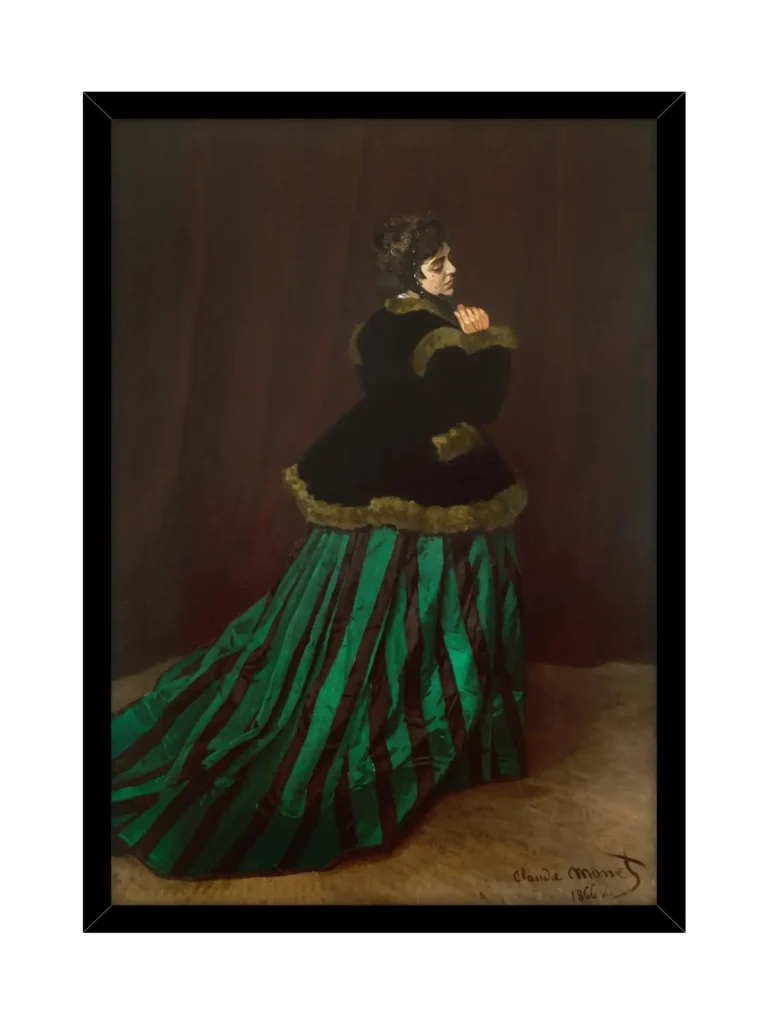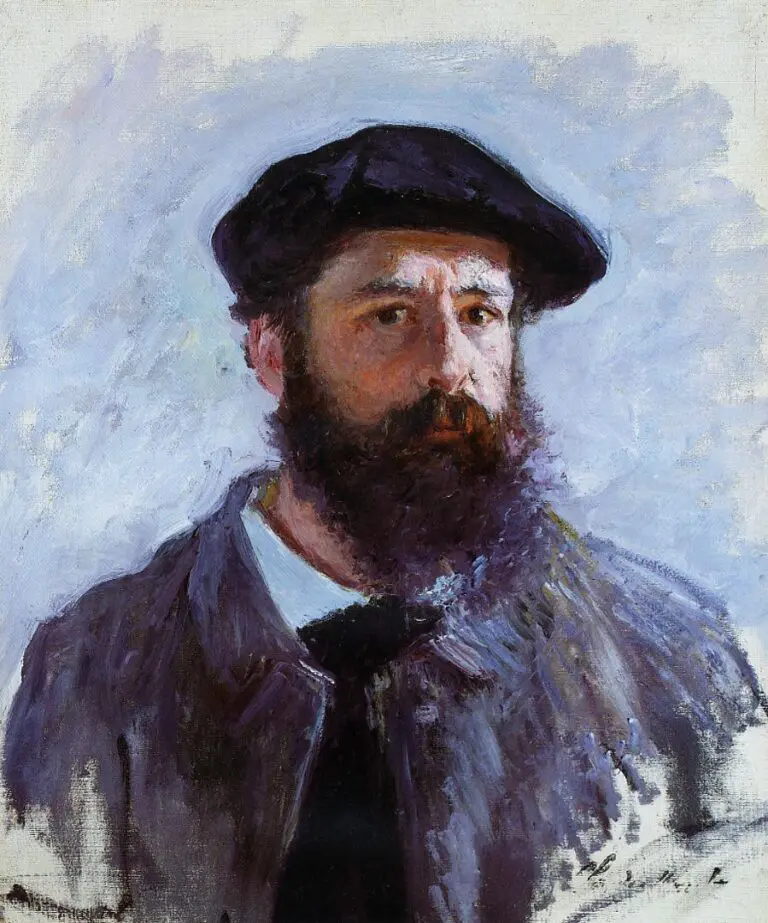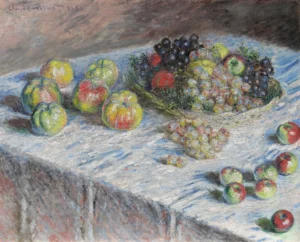Camille (The Woman in the Green Dress) (1866)
'Camille (The Woman in the Green Dress)' is an oil painting by Claude Monet featuring his beloved Camille Doncieux. The artwork captures her elegance in a striking green and black striped dress, adorned with yellow gloves and a fashionable capote. Painted in just four days for the 1866 Paris Salon, this lifelike portrayal reflects Monet's attention to detail and stands at 231 cm × 151 cm, solidifying its significance in his artistic journey and the Realist movement.
Year 1866
About the Artwork
The painting, completed in a mere four days, was prompted by Gustave Courbet's suggestion to submit a work to the 1866 Paris Salon. Monet's choice of Camille as the subject underscores their intimate relationship; she eventually became his wife. The piece represents a transitional moment in Monet’s career as he was beginning to gain recognition. Critics lauded the portrait's execution at the Salon, marking a significant stride in his artistic development and confirming Camille not just as a muse but as a prominent figure in his oeuvre. The rich details of her attire and the contrasting background highlight both Camille's fashion and individuality, establishing her as an icon of 19th-century femininity.
Did You Know
Camille Doncieux, the model in the painting, was not just Monet’s lover but also played a significant role as his muse throughout the 1860s, inspiring many of his works.
Monet completed this portrait in just four days, demonstrating his ability to rapidly capture the essence of his subject, a skill that would define his later Impressionist works.
At the time, life-size portraits of non-royal subjects were rare. Monet’s portrayal of Camille stands out for featuring a fashionable woman in a contemporary setting, breaking conventional artistic norms.









